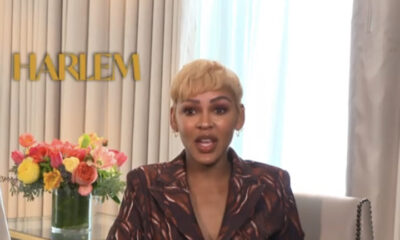Features
Ucheoma Onwutebe: Learning to Wear Myself Well
 It made the rounds on the internet last week, images of a woman who very much wanted to look like Hollywood actress Angelina Jolie. This woman, the wannabe doppelganger, submitted her face to thirty, forty, fifty cosmetic surgeries which yielded dismal results. Rather than Jolie, she emerged a slapstick version of the actress, a mean caricature a cartoonist might have drawn to lampoon the actress. Her previous pictures were placed by the side of this new, distorted visage and one could see in them the beautiful woman she once was.
It made the rounds on the internet last week, images of a woman who very much wanted to look like Hollywood actress Angelina Jolie. This woman, the wannabe doppelganger, submitted her face to thirty, forty, fifty cosmetic surgeries which yielded dismal results. Rather than Jolie, she emerged a slapstick version of the actress, a mean caricature a cartoonist might have drawn to lampoon the actress. Her previous pictures were placed by the side of this new, distorted visage and one could see in them the beautiful woman she once was.
Why would anyone want to take on the image and the likeness of another, famed or not? Did she think she would be met with more favours? Perhaps she believed she would navigate the path of life easier if she bore this new identity? What made her assume the complexities of life would melt at her feet, if she confronted them with a face other than hers?
I thought about how much she must have spent to achieve this failed feat, and I reached a verdict: only a person with an abject self-esteem would discard her own face — no matter how symmetrically aligned — to don that of another.
For most people, the journey to self-acceptance and finding contentment in their appearance is lifelong. They dither in and out of mindsets, situations, relationships that have them shuffling through life in doubt, peering into mirrors and willing some parts of them to grow or shrink into non-existence. Some fortunately arrive at their aha! moment: that incident, that encounter, that line of thought, that conversation with another or with self, that television show, that video clip on the internet or a post on someone’s timeline. Suddenly the proverbial light bulb turns on, brings the last piece of puzzle to place, steers one’s mind to a confident direction.
I remember my journey which began once upon an all girls’ boarding school. We were a congregation of pubertal girls, aged nine to seventeen. Each morning, 5:30am precisely, at the knelling of the rising bell, we carried our pails of cold water to the open space bathrooms in spite of any weather. I had never seen such large number of naked bodies and that made me self-conscious. But over time, undressing before so great a company of witnesses was no more a premeditated act. Soon enough I joined in the laughs and jests while we scrubbed away, even grew comfortable enough to compare bodies: Your breasts are too big. Your breasts are too small. Your bum is like slippers. I wish I had your hips.
But in those moments of playfulness, and because teenagers have the vilest of tongues—too quick to speak, too frank to be empathetic—a snide comment made in passing may linger, becoming a kernel of self-doubt seeded in one’s psyche, forming roots that may never go away.
Many teenage girls experience these bouts of insecurities, especially when you see your body budding differently from that of your peers, when you think the faces of your mates are easier on the eye than yours, their tongue more glib, their gait more comely. Your face, your body, your gait become inadequate enemies you’ve been cursed with for life. At that age the desire to blight out your image and take on that of another becomes strong.
But after boarding school, between the lull of JAMB and post UME tests, when I had been separated from the constant chatter of my peppy friends, I realised those comments were mere infantile excesses. Weren’t we all young women at the verge of self-definition, thereby incapable of defining another?
You look in the mirror and make peace with the face and the body that nature and gene have conspired to gift you; you cannot do away with them. But then you readjust your focus and magnify the desirables. The eyes may be prominent but the lips curl beautifully. The teeth may be scattered but the lilt of the voice is sonorous. The bridge of the nose may be crooked but the ears are pert, the cheek dimples.
With these formulae, I learned to wear myself well. But come to think of it, who are these people, these umpires who call the shots on what’s beautiful or not? The media? Society? Naysayers, hecklers on the streets? When do we call their bluff and rise above their opinions?
I have no grouse against cosmetic surgery. I have come to understand the world I live in, and the wear and tear that comes in tow with life. One can decide to meet a surgeon and say, Lift my butt. Chisel out my nose. Fill out my breasts. Tuck in my tummy. Plastic surgery is the miracle many have prayed for all night. It has availed breast cancer patients reconstructive procedures that restore the firmness and suppleness of the breasts. It has helped many grow more confident in their bodies; through surgery they have learned to wear themselves better.
According to plasticsurgery.com, women make up 92% of cosmetic surgery clientele. But here is where the narrative goes awry, when women take these routes, not for their own benefits, but to snare or spite a lover, you find them all over social media, crying foul when an ensnared lover leaves, when he is no more charmed by the amended body part. But what business does one have with a lover who taunts one’s image, who demands such change for his sake?
Looking closer at the aforementioned woman, the Jolie wannabe, one can see she did not have the best of surgeries. Had she been to experts, her face would have been redeemed. This leaves food for thought: if you opt for cosmetic surgery, love yourself enough to commit your body to the best of the trade. Save money. The quack at your backyard injecting cement into butts ought not to be near your options. But while you are saving, wear yourself well.
Photo Credit: © Gaudilab | Dreamstime

























